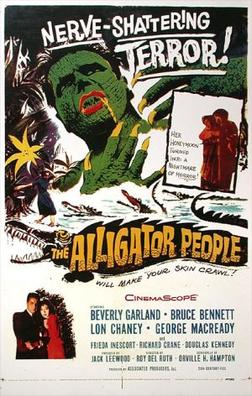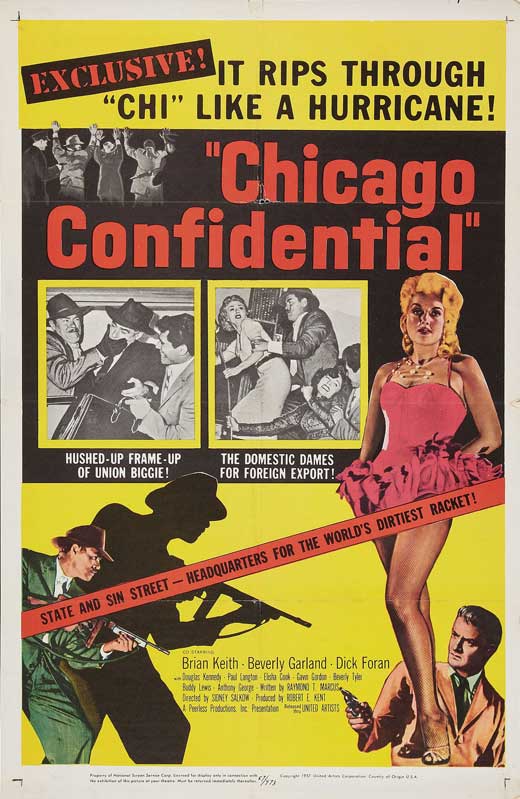You know what the worst bayou is?
Bayouself.
Thank you! I’ll be here all night and don’t forget to tip your server!
Anyway, the 1959 film, The Alligator People, largely takes place in the bayous of Louisiana. Nurse Jane Marvin (Beverly Garland) is suffering from amnesia so she allows two psychiatrist to give her a dose of truth serum and then, when she’s in a hypnotized state, she proceeds to remember her former life as Joyce Webster.
Joyce married a handsome and seemingly perfect man named Paul Webster (Richard Crane) but, right when they were about to go on their honeymoon, he received a telegram that disturbed him. After he made a phone call, he vanished from Joyce’s life. Joyce did some research of her own and discovered that Paul’s former home was the Cypresses Plantation in the small town of Bayou Landing, Louisiana.
When Joyce travels down to Bayou Landing, she discovers that there’s really not much there, other than a bunch of hungry alligators. She meets the owner of the plantation, Lavinia Hawthorne (Frieda Inescort). She also meets the handyman, Manon (Lon Chaney, Jr.), a one-handed brute who spends most of his day shooting at alligators. And, eventually, Joyce comes across her husband but Paul is no longer the man that she remembers.
Paul’s skin is scaly and he only comes out at night. It turns out that Paul was, long ago, injected with a serum that would allow him to grow back a missing limb. The serum worked as far as the limb was concerned but an unfortunate side effect is that Paul is now turning into an alligator! Dr. Mark Sinclair (George Macready), the man who came up with the serum in the first place, is hopeful that he can reverse the process but, to do so, he’s going to need a lot of radioactive material.
Complicating things is that Manon has decided that he wants Joyce for himself and he’s certainly not going to compete with some alligator man for her attention. Of course, Joyce despises Manon from the first moment she sees him but Manon’s not that smart. Can Paul be cured before Manon destroys everything?
The Alligator People is one of those 1950s B-movies that is probably better-known for its name than anything else. That said, when taken on its own terms, it’s an entertaining watch. It was one of the final films to be directed by Roy Del Ruth, who had previously been one of Hollywood’s top directors of musicals and comedies. There’s not much music or deliberate comedy to be found in The Alligator People but Del Ruth does manage to capture the humid stillness of the bayous. As always, Beverly Garland gives a strong performance as a determined woman who isn’t going to be told what to do and Richard Crane is about as convincing as one can be while turning into an alligator.
As for Lon Chaney, Jr, he plays Manon as being a total monster and he gives a convincing performance, even if it is hard not to mourn the loss of the shadings that he brought to his monster roles while he was with Universal. Manon is a rough and determinedly unintelligent character, one who exists only to destroy. Significantly, he’s not one of the Alligator People. Instead, he’s just a man who doesn’t care about anyone but himself.
The Alligator People is an effective B-movie, full of a bayou atmosphere.









